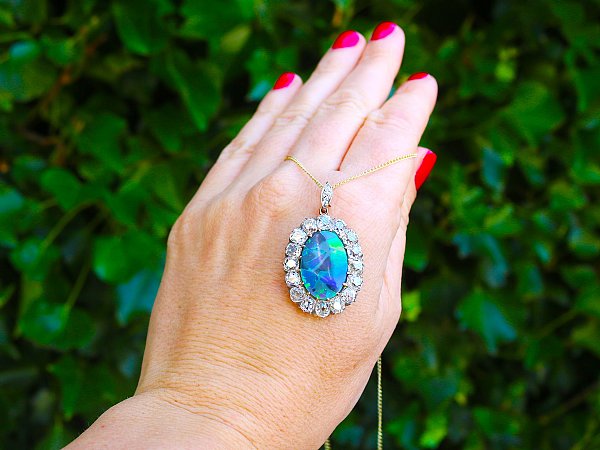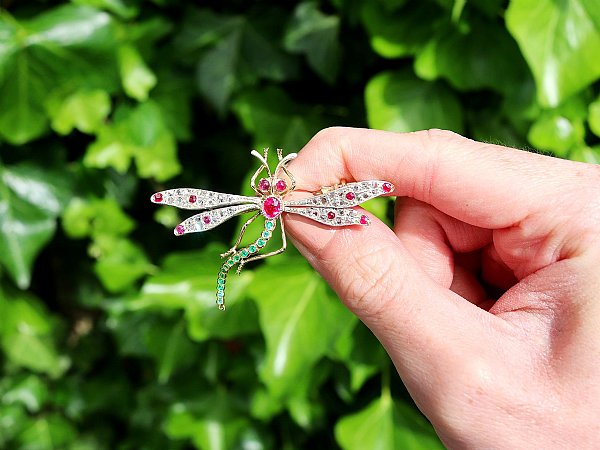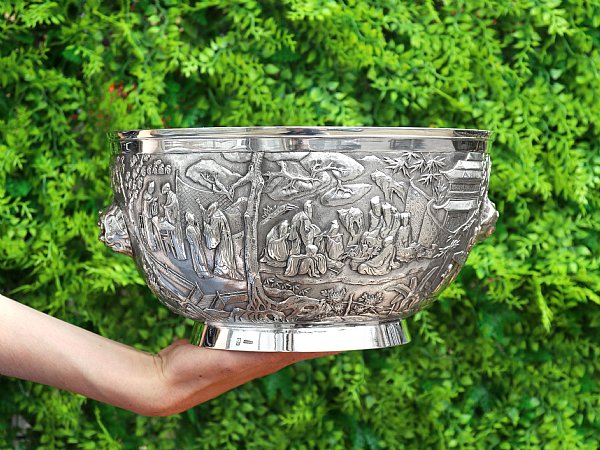Search Results for: '{{searchText}}'
Sorry...
We don't seem to have what you're looking for.
However we do have thousands of magnificent pieces of silver and jewellery available for you to view online. Browse our store using one of these categories.
Please wait for loading data... 
At AC Silver we are pleased to be able to offer our customers a large collection of antique and vintage opal jewellery for sale.
Our selection features a range of opals including the more unique harlequin and black opals. We also feature examples from the Victorian period and crafted in the Art Nouveau manner; available in platinum, palladium, yellow and white gold.
Opals are exalted among gemstones for their exceptionally unique and eye-catching colourations. There are several different varieties of opals, and each stone has its own individual plays of colour throughout. They have long been used in jewellery, revered for their beauty and supposed abilities. Today, opal jewellery is widely popular among collectors and amateurs alike.
AC Silver offer a 14-day return policy, and include a free ring sizing service.
Andrew Campbell, using his 40 years’ experience within the antique industry, handpicks all vintage and antique opal jewellery for sale.

Opals are created when an influx of rain falls in chronically dry grounds. The rain pushes through to rock deep beneath the surface, bringing dissolved silica with it. The rainfall in these areas is usually seasonal, such as in the Australian outback. When the rainy season has passed, the ground dries up once more. The silica deposits in the rock formations form into opals through this process.
The name ‘opal’ derives its origins from Sanskrit and Greek. The Sanskrit word ‘upala’ means jewel, while the Greek ‘opállios’ is used to describe a change in colour. Together, the words are appropriate for describing the unique qualities seen in opals. The scientific explanation for opalescence is a pseudo chromatic optical effect resulting in flashes of coloured light from certain minerals. In the jewellery world, it is usually referred to as a ‘play-of-colour’ or ‘fire’.
There are five main types of opals commonly seen in the fine jewellery world. These are: white opals, black opals, fire opals, boulder opals, and crystal opals. The differentiations with these opals involve their overall colours and shading.
Opals, perhaps because of the visible ‘movement’ of colours within them, have always been associated with eyesight. Wearing opals or carrying them on one’s person has long been believed to assist with improving eyesight, as well as staving off eye-related diseases.
Their distinctive appearance also led to the belief that having opals was an indicator of superstition or a penchant for magical practises. When opals were first worked by jewellers, many believed they were an unlucky stone because of their fragility relative to other precious gemstones. The vast majority of opals are cut into an oval or rounded shape, as this was the best way to avoid breaking the stone while crafting.
Conversely, those in the Middle Ages associated opals with good fortune, believing that its play-of-colour was representative of all other gemstones comprising those shades.
Whilst the opal in many cultures has positive qualities, in medieval Europe they not only gained the reputation of bringing the wearer bad luck, they also directed the attention that the owners were witches and sorcerers. With this in mind many bore connection with the opal to the Black Plague – however there is no historical factual evidence to any of these negative qualities. Long before medieval times, however, the Europeans saw the opal as a sign of hope, purity and truth, and it can be determined that some of the opals associated evil properties could have been to prevent theft.
In Ancient Rome, the opal was considered a very precious stone with a stunning appearance; with comparisons to volcanoes, galaxies and rich colours which could only be found in paintings and fires. The ancient Greeks saw the depth of the stone also and dedicated the reputation that the stone could not only predict the future but protect the wearer from illness.
In literature the opal has mixed reviews, however the infamous Shakespeare himself admired the opal and in Twelfth Night called it “that miracle and queen of gems”.
In the Victorian period the opal was highly desirable due to influential Queen Victoria’s appreciation and large personal collection. Whilst the colours of the stones may dictate the metal colour which is of design preference, the Victorian era saw many yellow gold options available, due to the crafting processes and resources available. There were new mines discovered in Australia towards the end of Queen Victoria’s reign, and the design style incorporating opals moved into the more decadent Edwardian period. With this the Art Deco and Art Nouveau movements incorporated the opal willingly, as a pale stone with a flash of colour, and allowed for more white gold and platinum options to become available.
Opals are not as hardy as other gemstones. While many stones can be worn every day without fear of damage occurring, opals require greater care. They are very sensitive to chemicals, and so perfumes, moisturisers, and abrasive cleaners should be kept well away from making contact with the stone. They are also susceptible to being damaged from exposure to sunlight and water.
It is important to store opal jewellery out of direct sunlight in order to preserve its distinctive colouring. Excessive exposure to water can also damage and opal’s beauty and leave it looking dull and lacking its original depth.
Although these stones require more attention to detail when it comes to their care, this is part of what makes them so desirable. In the right hands, opal jewellery can provide a lifetime of wear and stunning beauty that cannot be matched by other gemstones. Avid antique and vintage jewellery collectors will pay premium prices for older stones that have been well maintained.
Opals are the birthstone for those born in October, thus naturally opal jewellery of all kinds is an excellent gift idea for anyone with an October birthday. They are also good gifts for wedding anniversaries, as although the traditional gift themes do no include opals, they are a more unique choice for those who don’t care to keep up every tradition from times long passed.
For those who choose the opal as their favourite gemstone, it is tempting to select an opal engagement ring, however, this is a choice that should not be taken lightly. Given the aforementioned difficulties associated with caring for opals, they are not intended to be worn every day. If you would like your engagement ring to be an opal, the item should be worn for special occasions or once or twice weekly.
Opal jewellery is a unique choice among gemstones. The typical response to opals is one of awed amazement. While still images somewhat capture their effervescent appeal, nothing compares to seeing one in person; opals incandesce with depth and movement that is difficult to resist. They are excellent gifts for romantic partners, friends, and family members and equally, a piece of opal jewellery is the perfect gift to give to oneself. These stones have been admired for their stunning individuality since their discovery, something that is highly unlikely to change any time soon.




